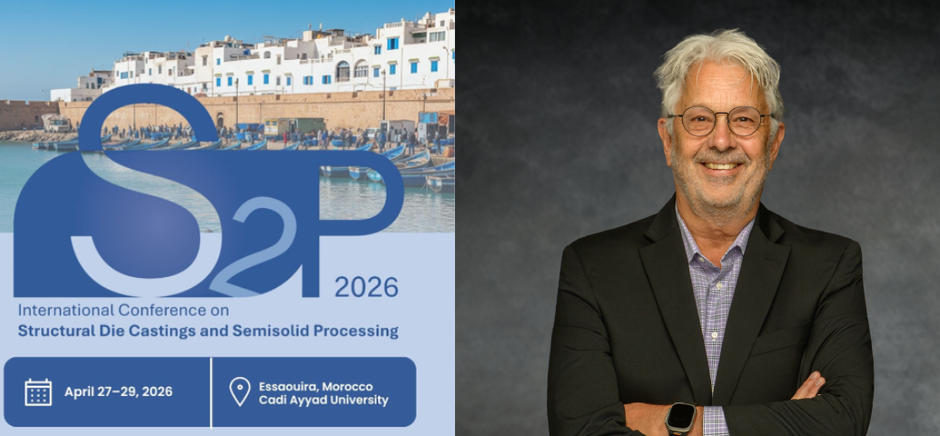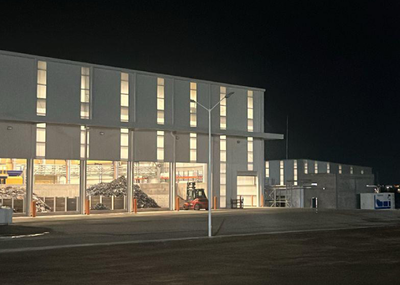The organizing committee of the XVIII S2P Conference is pleased to announce a significant expansion of the event’s focus.
For the first time, the program will highlight not only semi-solid metal processing but also structural die castings, reflecting the increasing convergence of these technologies in advanced manufacturing.
This broader scope creates a comprehensive platform to present the latest innovations, technical challenges, and emerging opportunities in modern casting technologies. The conference is designed to foster intensive knowledge exchange and collaboration among researchers, engineers, and industry leaders, driving the future of high-performance casting and component design.
The XVIII S2P Conference will take place from April 27 to 29, 2026, in Morocco, under the co-chairmanship of Dr. Steve Midson and Dr. Ahmet Rasilli.
The event welcomes researchers, engineers, and decision-makers from across the global casting industry.
We are delighted to have the opportunity to speak with Dr. Steve Midson, Co-Chairman of the XVIII S2P Conference.
FP: S2P will take place in Morocco in 2026. This is an exciting location – how did the decision come about, and what can participants expect from the setting and the event?
Steve: We were looking for a location that would be convenient visa-wise for travelers from around the world – from Europe, Asia, the Americas, and other continents. We considered several options, and since one of the co-organizers, Ahmet Rasilli, has excellent contacts in Morocco, we chose this location. We also think it will be exciting for attendees to experience Moroccan culture.
FP: In China – and increasingly also in the United States – we see a strong trend toward so-called giga-castings in die casting. In Europe, the industry still seems more hesitant. Do the Chinese already have a competitive advantage here, and what about quality aspects? Some OEMs and industry leaders even describe this as a kind of cultural battle. Will this topic play a role at the conference in Morocco?
Steve: I would not say that the Chinese have a competitive advantage. While there are many more Giga-presses (machines over 6,000 tons) in China – about 110 machines – than in North America (around 25 in the USA and Canada), the machine utilization is significantly lower in China, so productivity is probably similar in both regions.
Regarding quality, it is more difficult to make a judgment. Both regions are advancing in giga-casting, and the difference in the number of machines mainly reflects different approaches to capital investment between the two regions.
FP: China is also moving forward in large-scale castings, and we hear similar reports regarding semi-solid castings. Has research and development shifted to China, or are Chinese companies simply bolder in implementing new trends?
Steve: Over the past five to ten years, there has been more activity in both research and commercial production of semi-solid castings in China than in other parts of the world. However, that appears to be changing, with renewed interest in semi-solid casting in both North America and Europe.
Interestingly, while activity levels in China have been higher, the main technologies used for producing semi-solid castings were not originally developed in China, but in other parts of Asia and Europe. So, I believe semi-solid casting remains a global technology, with China currently leading in commercial applications.
FP: Analysts predict further growth in non-ferrous casting over the next decade, with more components in automotive production being made from aluminum or magnesium. How do you assess this trend?
Steve: The transition from internal combustion engines (ICEs) to electric vehicles (EVs) means that lightweighting continues to be a major focus for automotive companies worldwide.
As many conversions from ferrous alloys to aluminum castings have already taken place, automakers now need to be more inventive to achieve further weight reduction.One possibility is to replace aluminum components with magnesium, and we are starting to see growing interest here – particularly in magnesium thixomolding semi-solid processes.
Another direction is thinner-walled aluminum castings, and again semi-solid casting offers strong potential for producing thinner sections.
A third approach is to increase the strength of aluminum castings, and both high-vacuum and semi-solid die casting methods provide opportunities for higher strength through heat treatment. It will be extremely interesting to see which of these processes ultimately wins out.
FP: Looking ahead to next year’s S2P Conference – have all speakers already been confirmed, or can interested experts still submit contributions and papers?
Steve: The deadline for abstract submissions has passed. However, if someone is interested in presenting a paper on structural die castings at the conference, I encourage them to contact the organizers directly at S2P26@s2p-conference.com, and we will see if it’s possible to fit them in.
Dr. Midson, thank you very much for your insights.
About Dr. Steve Midson
Metallurgical Consulting for Metal Casting & Shaping
Dr. Steve Midson, President of The Midson Group, is an internationally renowned expert in die casting, foundry technology, semi-solid casting, additive manufacturing, metal shaping, and metallurgical evaluations.
The Midson Group assists clients with technical, research, business, and marketing challenges in these areas.
In addition, Dr. Midson serves as Research Professor and Director of Industry Relations at ADAPT, the additive manufacturing center at the Colorado School of Mines. He supervises graduate students and teaches undergraduate courses in Foundry Metallurgy.
With his combined expertise in research, teaching, and industry collaboration, he is recognized as one of the leading voices in international foundry and materials technology.
Source: www.s2p-conference.com








